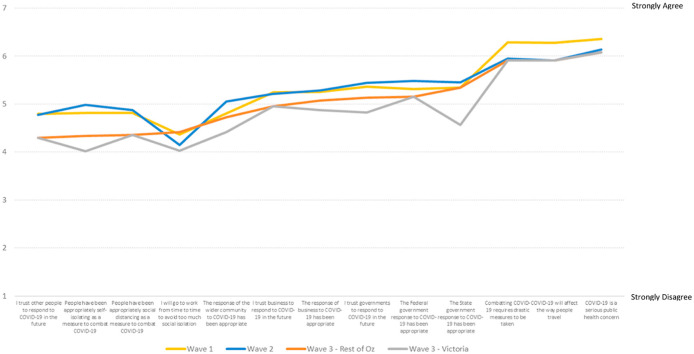- Record: found
- Abstract: found
- Article: not found
Australia 6 months after COVID-19 restrictions- part 1: Changes to travel activity and attitude to measures

Read this article at
Abstract
While many countries have experienced more than one wave of the pandemic throughout 2020, Australia has been able to contain the virus in a way that makes it a stand out (with New Zealand) in the way that it has been contained, with an exception in Victoria linked to failed quarantine procedures for travellers returning from overseas. Through descriptive analysis, this paper builds on earlier papers by the authors on the Australian response, with a focus on the changing dynamics of travel activity, concern with public transport, and attitudes surrounding activity given the perception of risk of COVID-19 and the level of public support for regulatory intervention and restrictions on movement. We find that Australia continues to suppress travel, particularly that for commuting, that comfort in completing day-to-day activities continues to rise (with the exception of Victoria where confidence feel significantly), and while support for intervention measures remains high, there has been an erosion in sentiment. As with previous work, we discuss what this might mean for future transport policy, and attempt to draw lessons from the Australian experience.
Graphical abstract
Related collections
Most cited references23

- Record: found
- Abstract: found
- Article: found
A nationwide survey of psychological distress among Chinese people in the COVID-19 epidemic: implications and policy recommendations
- Record: found
- Abstract: found
- Article: found
The effect of COVID-19 and subsequent social distancing on travel behavior
- Record: found
- Abstract: found
- Article: not found

